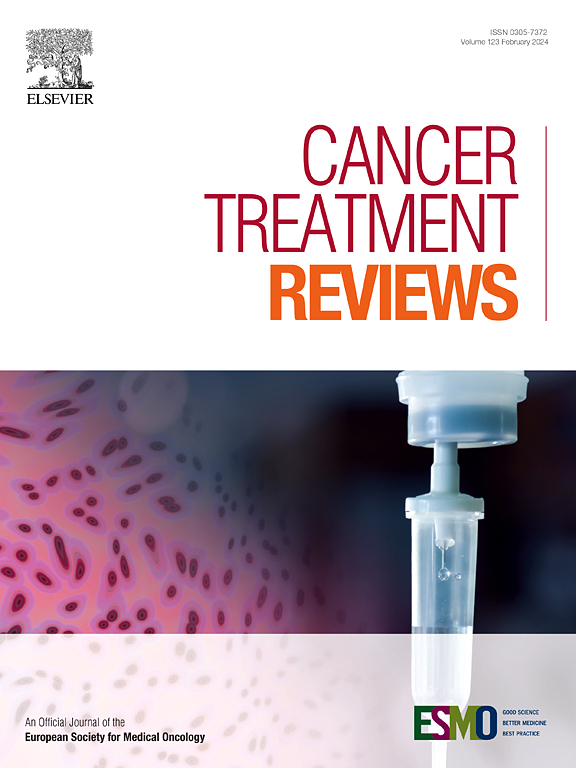原发性纵隔大b细胞淋巴瘤:生物学特征、临床特征和目前的治疗策略
IF 9.6
1区 医学
Q1 ONCOLOGY
引用次数: 0
摘要
原发性纵隔大b细胞淋巴瘤(PMBCL)是一种独特的b细胞淋巴瘤亚型,由于其独特的表现、组织病理学特征和治疗反应,代表了临床和治疗的挑战。它主要影响年轻人,以女性为主,特点是前纵隔肿块大,可引起压迫症状。尽管PMBCL具有侵袭性,但患者预后良好,通过一线治疗早期缓解,5年生存率超过80%。根据近年来重大的科学治疗进展,本文综述了PMBCL患者不断发展的治疗策略。含蒽环类药物和利妥昔单抗的方案是一线治疗的主要方法,通常随后进行纵隔放射治疗。然而,对长期毒性的担忧导致了对治疗方案的重新评估,这表明根据pet引导的方法,在诱导治疗后达到完全代谢反应的患者可以安全地省略放疗。此外,新的靶向疗法,如PD-1抑制剂和CAR-T细胞免疫疗法,在难治性或复发性PMBCL中显示出有希望的结果。本文章由计算机程序翻译,如有差异,请以英文原文为准。
Primary mediastinal large B-cell Lymphoma: Biological features, clinical characteristics and current treatment strategies
Primary mediastinal large B-cell lymphoma (PMBCL) is a distinct subtype of B-cell lymphoma, representing a clinical and therapeutic challenge due to its unique presentation, histopathological features, and treatment response. It primarily affects young adults, with a significant female preponderance, and is characterized by a large anterior mediastinal mass that causes compressive symptoms. Despite its aggressive nature, PMBCL patients have a favorable prognosis, with a 5-year survival rate exceeding 80% when early remission is achieved through first-line therapy. Drawing on the significant scientific therapeutic advances over recent years, this review focuses on the evolving treatment strategies for PMBCL patients. Anthracycline- and rituximab-containing regimens are the mainstays of first-line approaches, often followed by mediastinal radiation therapy. However, concerns regarding long-term toxicities have led to a reevaluation of treatment protocols, suggesting that radiotherapy can be safely omitted in patients who achieve a complete metabolic response after induction therapy, according to a PET-guided approach. Furthermore, new targeted therapies such as PD-1 inhibitors and CAR-T cell immunotherapy, have shown promising results in refractory or relapsed PMBCL.
求助全文
通过发布文献求助,成功后即可免费获取论文全文。
去求助
来源期刊

Cancer treatment reviews
医学-肿瘤学
CiteScore
21.40
自引率
0.80%
发文量
109
审稿时长
13 days
期刊介绍:
Cancer Treatment Reviews
Journal Overview:
International journal focused on developments in cancer treatment research
Publishes state-of-the-art, authoritative reviews to keep clinicians and researchers informed
Regular Sections in Each Issue:
Comments on Controversy
Tumor Reviews
Anti-tumor Treatments
New Drugs
Complications of Treatment
General and Supportive Care
Laboratory/Clinic Interface
Submission and Editorial System:
Online submission and editorial system for Cancer Treatment Reviews
 求助内容:
求助内容: 应助结果提醒方式:
应助结果提醒方式:


